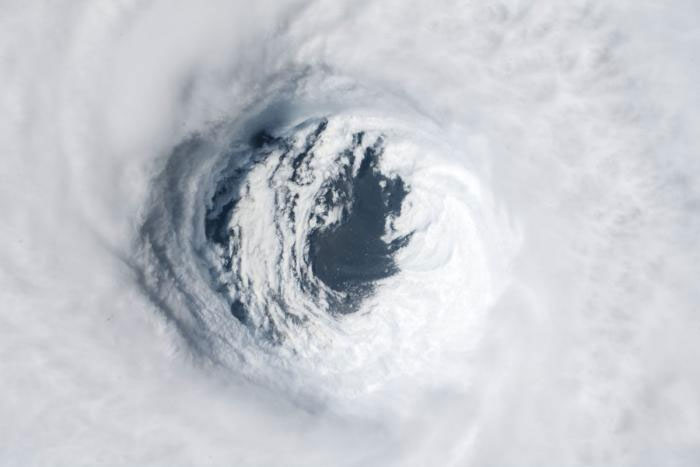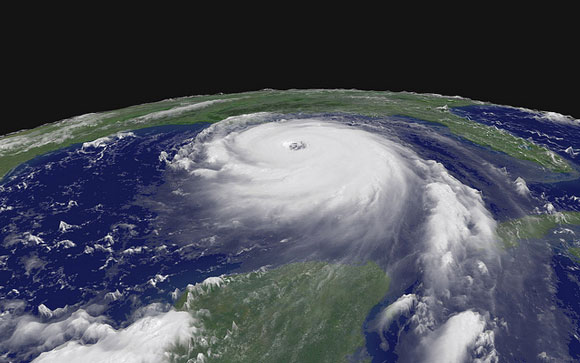
The 2022 Atlantic hurricane season officially starts June 1 and extends through November 30. On May 24, 2022, the National Oceanic Atmospheric Climate Prediction Center (NOAA) released the hurricane season outlook for this year. They’re predicting an above-average season for the seventh-consecutive year, with 14 to 21 named storms. They predict that six to ten of those will become hurricanes, and that there should be between three to six major hurricanes with winds 111 mph (179 kph) or higher.
Last year was also an active year
NOAA said that last year, 2021, was:
… the third most active year on record in terms of named storms. It marks the sixth consecutive above-normal Atlantic hurricane season, and this was the first time on record that two consecutive hurricane seasons exhausted the list of 21 storm names.
Seven of those named storms were hurricanes, and four of them became major hurricanes.
Where do hurricane names come from?
Did you ever wonder how hurricanes get their names, and why they have names at all? Meteorologists long ago learned that naming tropical storms and hurricanes helps people remember the storms, communicate about them more effectively, and consequently stay safer if and when a particular storm strikes a coast.
These experts assign names to tropical storms according to an approved list before the start of each hurricane season. The U.S. National Hurricane Center started this practice in the early 1950s. Now, the World Meteorological Organization (WMO) generates and maintains the list of hurricane names.
Here are the hurricane names for 2022
Atlantic hurricane names (season runs from June 1 to November 30) are: Alex, Bonnie, Colin, Danielle, Earl, Fiona, Gaston, Hermine, Ian, Julia, Karl, Lisa, Martin, Nicole, Owen, Paula, Richard, Shary, Tobias, Virginie and Walter.
Eastern North Pacific hurricane names (season runs from May 15 to November 30) are: Agatha, Blas, Celia, Darby, Estelle, Frank, Georgette, Howard, Ivette, Javier, Kay, Lester, Madeline, Newton, Orlene, Paine, Roslyn, Seymour, Tina, Virgil, Winifred, Xavier, Yolanda and Zeke.
If you’re interested, you can view those names, and names for upcoming years, at the U.S. National Hurricane Center.

How and why did hurricanes first begin receiving names?
While people have been naming major storms for hundreds of years, most hurricanes originally had a designation using a system of latitude-longitude numbers. This was useful to meteorologists trying to track these storms. Unfortunately, this system confused people living on coasts seeking hurricane information.
In the early 1950s, the U.S. National Hurricane Center first developed a formal practice for storm naming for the Atlantic Ocean. At that time, storms got their names according to a phonetic alphabet (e.g., Able, Baker, Charlie) and the names used were the same for each hurricane season. In other words, the first hurricane of a season was always named “Able,” the second “Baker,” and so on.
In 1953, to avoid the repetitive use of names, the National Weather Service revised the system to give storms female names. By doing this, the National Weather Service was mimicking the habit of naval meteorologists, who named the storms after women, much as ships at sea traditionally had female names.
In 1978–1979, they revised the system again to include both female and male hurricane names.
See the complete history of naming hurricanes, from NOAA
When does a storm receive a name?
Tropical storms get a name when they display a rotating circulation pattern and wind speeds reach 39 miles per hour (63 kilometers per hour). A tropical storm develops into a hurricane when wind speeds go above 74 mph (119 kph).
Experts have developed lists of hurricane names for many of the major ocean basins around the world. Today, there are six lists of hurricane names in use for Atlantic Ocean and Eastern North Pacific storms. These lists rotate, one each year. That means the list of this year’s hurricane names for each basin will come up again six years from now.
There’s an exception to this practice, however. The World Meteorological Organization retires the names of extremely damaging hurricanes for legal, cultural sensitivity and historical reasons. For example, they retired the name Katrina in 2005 following the devastating impact that Hurricane Katrina had on New Orleans. In March 2019, the WMO removed the names Florence and Michael from its lists for the Atlantic Ocean basin and replaced the names with Francine and Milton. Hurricanes Florence and Michael, which respectively struck the coasts of North Carolina and Florida in 2018, each caused tremendous damage and dozens of fatalities.

Bottom line: The World Meteorological Organization chooses hurricane names several years in advance. Find hurricane names for 2022 here. Is your name on the list?
The post Hurricane names for 2022: Is yours on the list? first appeared on EarthSky.
0 Commentaires